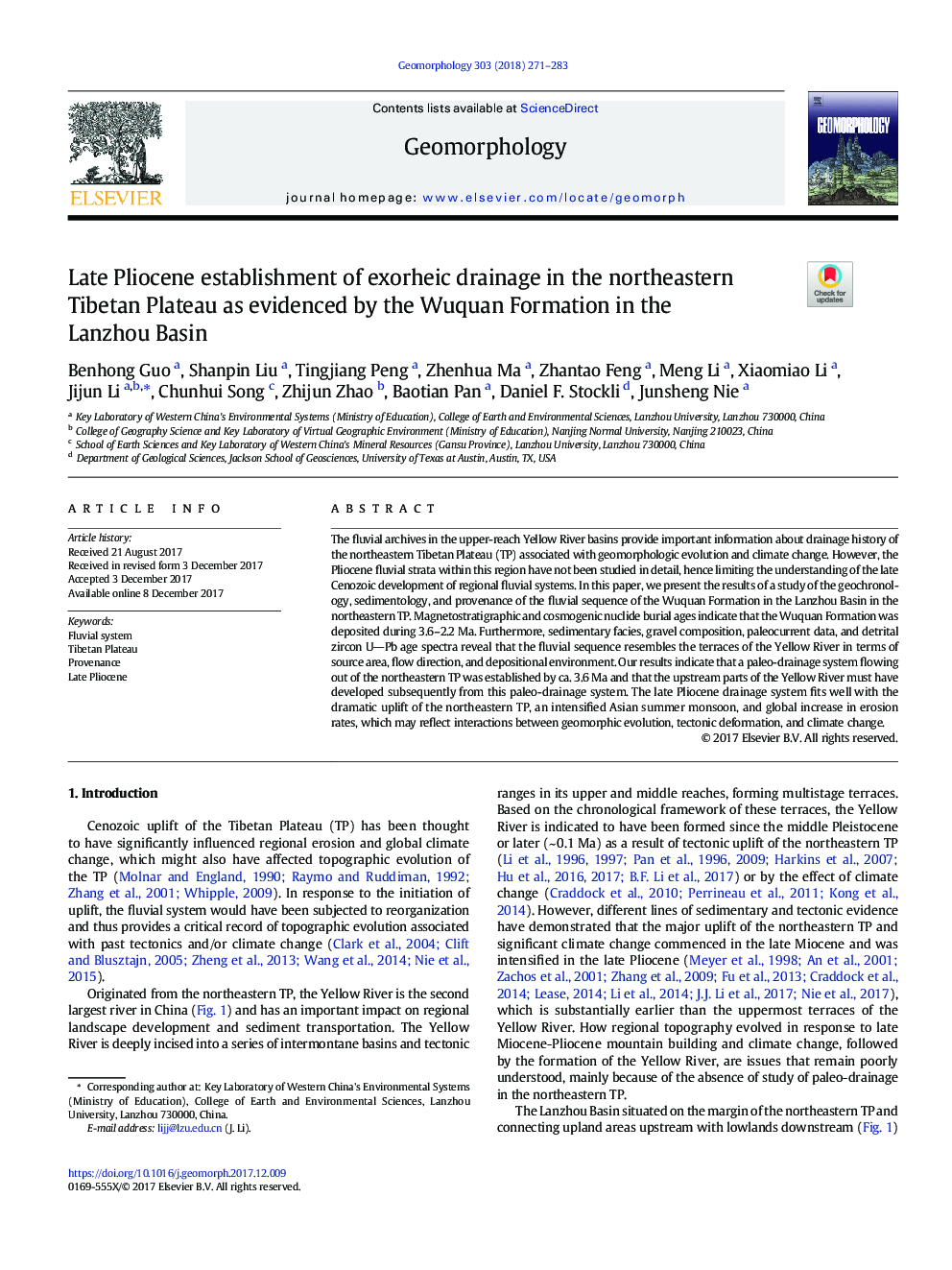| Article ID | Journal | Published Year | Pages | File Type |
|---|---|---|---|---|
| 8908227 | Geomorphology | 2018 | 13 Pages |
Abstract
The fluvial archives in the upper-reach Yellow River basins provide important information about drainage history of the northeastern Tibetan Plateau (TP) associated with geomorphologic evolution and climate change. However, the Pliocene fluvial strata within this region have not been studied in detail, hence limiting the understanding of the late Cenozoic development of regional fluvial systems. In this paper, we present the results of a study of the geochronology, sedimentology, and provenance of the fluvial sequence of the Wuquan Formation in the Lanzhou Basin in the northeastern TP. Magnetostratigraphic and cosmogenic nuclide burial ages indicate that the Wuquan Formation was deposited during 3.6-2.2Â Ma. Furthermore, sedimentary facies, gravel composition, paleocurrent data, and detrital zircon UPb age spectra reveal that the fluvial sequence resembles the terraces of the Yellow River in terms of source area, flow direction, and depositional environment. Our results indicate that a paleo-drainage system flowing out of the northeastern TP was established by ca. 3.6Â Ma and that the upstream parts of the Yellow River must have developed subsequently from this paleo-drainage system. The late Pliocene drainage system fits well with the dramatic uplift of the northeastern TP, an intensified Asian summer monsoon, and global increase in erosion rates, which may reflect interactions between geomorphic evolution, tectonic deformation, and climate change.
Related Topics
Physical Sciences and Engineering
Earth and Planetary Sciences
Earth-Surface Processes
Authors
Benhong Guo, Shanpin Liu, Tingjiang Peng, Zhenhua Ma, Zhantao Feng, Meng Li, Xiaomiao Li, Jijun Li, Chunhui Song, Zhijun Zhao, Baotian Pan, Daniel F. Stockli, Junsheng Nie,
